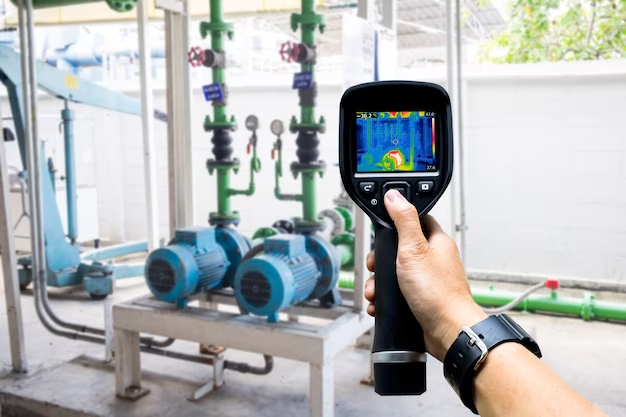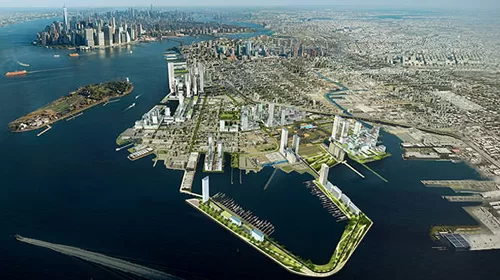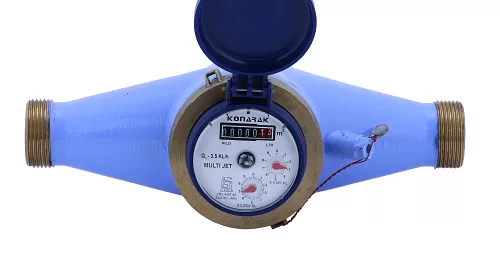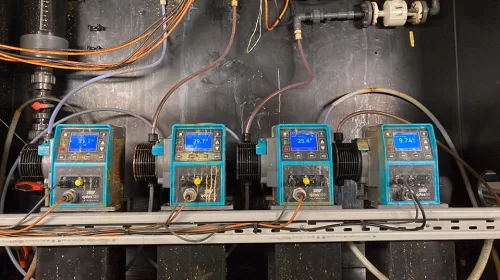Water is a crucial element for sustaining life. The swift expansion of population, urbanization, irrigation, and industrialization has exerted immense pressure on water resources. The combined effect of escalating usage of this invaluable natural resource has given rise to water scarcity in numerous regions across the globe with several countries facing difficult challenges. In India, almost 44% of the population is facing extreme water stress, reported by the Niti Aayog. Moreover, climate change has contributed to alterations in the hydrological cycle within the nation. Therefore, safeguarding this scarce resource requires adept and efficient management based on a sound scientific methodology, ensuring its sustainable development.
India, which has become the most populous nation in the world, is projected to have over 800 million people living in urban areas by 2050, from the current 518 million people. As the resources are limited, expanding cities have been facing severe crises concerning the availability of clean water, pollution of water bodies, the increasing gap between the demand and supply of water, and the widening gap between the volume of wastewater generated and the installed capacity of wastewater treatment plants.
The connection between water supply and wastewater management is closely linked, requiring the safeguarding of water sources to prevent contamination and ensure their suitability for drinking. In India, a significant challenge arises concerning municipal wastewater generation and the available treatment facilities. According to the Central Pollution Control Board (CPCB) report, urban areas in the country generate 72,368 million litres per day (MLD) of sewage, while only 1,469 sewage treatment plants (STPs) with a total treatment capacity of 31,841 MLD are available. This indicates an absence of facilities to treat more than 40,500 MLD (56%) of the generated sewage. This figure may be even higher, as not all sewage treatment plants are operating at their designed capacities, aggravating the issue further. The underutilization of existing treatment infrastructure highlights the urgent need for improved efficiency and expansion of wastewater treatment and management facilities to address the growing challenges posed by urban wastewater generation in India.
Traditionally, cities have been designed and operated with a linear flow of resources to accommodate the needs of a growing urban population. However, there is an increasing recognition that the economically viable reuse and recycling of treated wastewater present attractive options for addressing the gap between water demand and supply. Advancement in tertiary treatment technologies makes it feasible to treat wastewater to a level where it can be safely reused and recycled. Despite the potential benefits, concerns exist regarding the implications of large-scale recycling of treated wastewater, particularly concerning emerging contaminants.
Recent recognition suggests that engineered groundwater recharge can simultaneously address flood risk and water scarcity. Urgent efforts are needed to develop new materials, processes, and technologies for efficient water and wastewater treatment, recycling, and the removal of residual pollutants such as emerging contaminants and nutrients. Consequently, appropriate remedial measures should be implemented to reclaim polluted water bodies and ensure a safe water supply.
In present scenario with emerging challenges, there is an immediate need for efficient monitoring and surveillance of water quality to safeguard public health and prevent environmental degradation. The technologies related to water supply should be integrated with the planning, designing, and operation of water infrastructure systems to minimize water consumption, reduce leakage, and enhance water use efficiency optimally.
Water Monitoring
Water Monitoring is vital in achieving production and sustainability goals while enhancing process control. It is essential to monitor contaminants or classes of contaminants that impact treatment efficacy, product quality, or the integrity of equipment assets.
Water has become a passionate subject, with corporates across the globe establishing ambitious standards and metrics for water efficiency as their key corporate initiatives. Simultaneously, there is a growing interest among consumers as well who increasingly prioritize water quality and sustainability over the cost of it. This shift in consumer preferences is increasing the cost of ensuring water quality for water utilities and service providers.
There are tools and processes to ensure water monitoring in various settings. Advanced sensor technologies, data analytics, and remote sensing methods enable accurate and real-time monitoring of water quality and usage. Some of the key initiative that helps in effective monitoring is:
Technology & Data Analytics
Emerging technologies have surfaced to monitor and address both established and newly identified contaminants. Concurrently, the utilization of data analytics tools is on the rise, aiding in the evaluation of trends and predictive analysis. These analytical technologies, coupled with data visualization tools, play a crucial role in establishing performance indicators. However, the tracking and analyzing of data should serve a purpose. Collecting data merely for the sake of collection is inefficient, and data lacks utility without interpretation. Advance sensors, remote sensing, and data analytics play key roles in real-time monitoring of water parameters such as pH, turbidity, dissolved oxygen, and contaminant levels.
Advanced sensors provide real-time data on various water parameters, including pH, turbidity, and chemical composition. These technologies enable continuous monitoring and early detection of anomalies. Effective monitoring helps identify potential health risks associated with waterborne diseases and contaminants. Timely detection allows for swift intervention, preventing the spread of waterborne illnesses and safeguarding the well-being of communities.
Satellite-based remote sensing allows for large-scale monitoring of water bodies. It provides insights into water quality, changes in land use, and the identification of potential pollution sources. These sensors measure the surface area, volume, and water levels of these bodies, enabling to track changes over time. This information helps in understanding water availability trends, identifying water-stressed regions, and making informed decisions for water allocation and distribution. Utilizing remote sensing technology helps in identifying water pollution and tracking their spreading sources. Specialized sensors enable the identification and monitoring of pollutants such as oil spills, chemical discharges, and sediment runoff into water bodies. Early detection contributes to mitigating the environmental impact of pollution in water sources to take remedial actions and minimizing harm to the aquatic ecosystems.
The use of data analytics helps process vast amounts of information to analyse the changing trends, suggest for predictive modelling and the identification of patterns that may indicate emerging water quality issues. Internet of Things (IoT) and Big Data analytics can be used to develop an automated water quality monitoring and testing system that can handle the massive flow of water data generated by smart sensors spread everywhere. Data analysis can also help in improving our understanding of the system being measured and drives management actions.
These technologies enable early detection of pollution, efficient management of water treatment processes, and the assessment of environmental impacts. Data visualization tools are increasingly employed to analyze trends, model scenarios, and predict future water-related events. These technologies aid in decision-making processes by providing a clear and comprehensive understanding of water systems. Overall, water monitoring technology is instrumental in ensuring the sustainable management of water resources, addressing pollution concerns, and supporting informed decision-making for water-related challenges.
Groundwater Exploration
Groundwater is a crucial source of water supply, especially in India. Groundwater serves as a primary source of drinking water for both rural and urban populations. Many villages and towns depend on wells and borewells for their daily water needs. Farmers heavily rely on groundwater for irrigation, especially in regions where surface water availability is limited accounting for over 80% of the total groundwater extracted.
Remote sensing for water monitoring helps in identifying potential groundwater reservoirs by mapping subsurface geological structures and identifying areas with high groundwater potential. This valuable information is instrumental in promoting sustainable groundwater management and preventing the overexploitation of this essential resource.
Water is fit for Purpose
Water monitoring is crucial to ensuring that water is suitable for its intended purpose. This involves implementing appropriate treatment processes and monitoring measures to meet the specific quality requirements for various uses, such as drinking, agriculture, industrial production, or environmental preservation. Ensuring water fit for purpose is vital in optimizing its utility and safeguarding the health of ecosystems, human populations, and industrial operations.
There is a growing consensus that all water is interconnected, emphasizing the need for utilities and industries to synchronize their goals, recognizing their shared reliance on this extraordinary resource. Despite this unity, water serves various purposes, each with permissible quality standards or limits for contamination. It is crucial to treat and monitor water with respect to its intended use, ensuring that resources, time, energy, and labor invested in treatment are optimized for specific purposes.
Sahara Industry: Contributing with Innovation
Sahara Industry, the prominent name as innovative and advance water treatment solution provider in India, is taking the lead in addressing country’s diverse water challenges. With a successful track record of executing hundreds of projects spanning in a legacy of over two decades, the company has earned strong reputation and trust from utilities, industries, institutions and others. As the company strive to provide comprehensive solutions for water and wastewater treatment, water analysis and monitoring, plant operation and maintenance and other related solutions tailored to meet the diverse needs, the commitment to excellence and customer satisfaction has garnered recognition and praise in the industry.
Drawing from extensive experience in diverse water projects, Sahara Industry employs advanced technology and manufacturing solutions to develop state-of-the-art water and wastewater treatment and monitoring solutions in line with global standards. The company is certified with ISO 9001:2015, ISO 14001:2015, and ISO 45001:2018, solidifying its reputation as a respected brand in the industry, providing top-notch equipment, filtration and monitoring systems. Sahara Industry has received remarkable acclaim and accolades from industry associations and the media fraternity, thanks to its market-oriented approach driven by modern systems and processes.
Way Forward
Effective water monitoring is essential in the pursuit of sustainable and resilient water systems. From assessing water availability to monitoring water quality and detecting pollution sources, water monitoring provides valuable data to make informed decisions for sustainable water resource management. As we navigate a future with increasing demands on water, continued innovation in water monitoring will be paramount in ensuring a harmonious coexistence with this invaluable resource. By harnessing advanced technologies and embracing comprehensive monitoring strategies, we can effectively tackle water scarcity, environmental issues, safeguard public health, and enhance the management of water resources.
About the Author:
The young entrepreneur, equipped with marketing and finance degree, has achieved remarkable success in transforming the company into a prominent manufacturer of advanced and high-quality water and wastewater treatment solutions. His contemporary business approach, combined with technological innovations and dynamic leadership, has propelled his group companies to thrive efficiently, achieving a turnover exceeding INR 1200 million.





